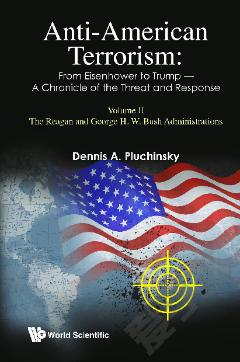Anti-american Terrorism: From Eisenhower To Trump - A Chronicle Of The Threat And Response: Volume Ii: The Reagan And George H.w. Bush Administrations
Volume I examined the policies and actions in the Eisenhower, Kennedy, and Johnson administrations that contributed to the creation of anti-American grievances which in turn fueled the rise of anti-American terrorism overseas and domestically during the Nixon, Ford, and Carter administrations. Volume II chronicles the high-water mark of anti-American terrorism overseas that occurred during the Reagan administration. The litany of terrorist attacks on US targets overseas during this period is well known and unmatched in American history: 1983 suicide attack on US Embassy Beirut, 1983 suicide attack on US Marine Barracks Beirut, 1983 suicide attack on US Embassy Kuwait, 1984 suicide attack on US Embassy Beirut, 1985 assault on the TWA counter at Rome airport, 1985 hijacking of TWA 847, 1986 mid-air bombing of TWA 840, 1988 mid-air bombing of Pan Am 103, and the 1982-1988 kidnappings of 18 Americans in Lebanon. This wave of anti-American terrorist attacks demanded an appropriate response. The Reagan administration proceeded to construct the most ambitious and costly counter-terrorism program in the pre-9/11 era. Although the terrorist threat was perceived to be in decline during the George H W Bush administration, it still had to deal with the potential terrorist threat emanating from the first Gulf War in 1990-1991, two assassination attempts on the president, and the ramifications of the Pan Am 103 bombing.
{{comment.content}}








 京公网安备 11010802027623号
京公网安备 11010802027623号